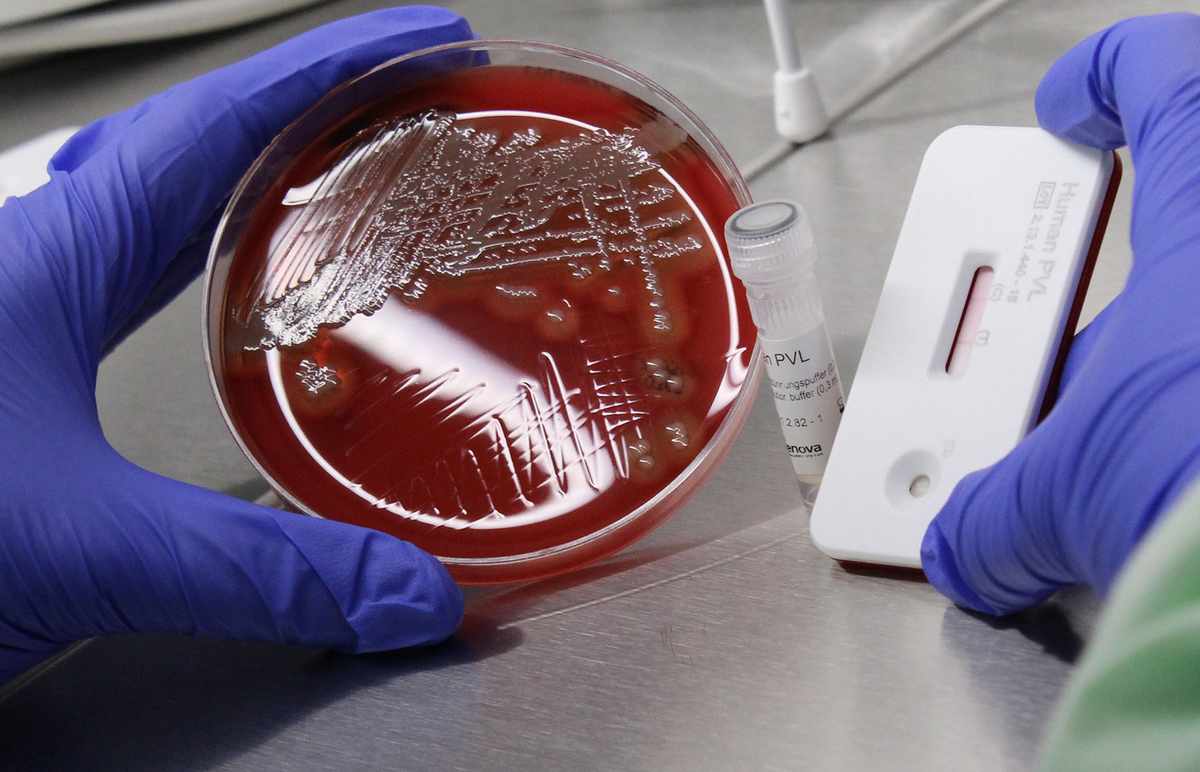In 20 to 40 percent of all people, Staphylococcus aureus bacteria – including antibiotic-resistant variants (methicillin-resistant S. aureus, or MRSA for short) – colonize the skin or nasal mucosa. Often this goes unnoticed, but S. aureus can also cause a wide variety of skin, soft tissue and bone inflammations, sepsis/blood poisoning and in some cases – for example as a complication of a viral disease – even the most severe pneumonia.
A key role in some of these infections is played by the toxins secreted by the bacterium, such as the toxin Panton-Valentin leucocidin: "Strains possessing this toxin often cause skin and soft tissue infections such as boils. In many cases, these then recur over long periods of time, which is very distressing for those affected. Sometimes PVL-forming bacteria can also cause life-threatening diseases due to their high virulence and often also antibiotic resistance," explains the microbiology doctor involved in the study, Dr. Stefan Monecke from the Leibniz-IPHT in Jena.
Clarifying as early and quickly as possible whether a patient is infected with a PVL-forming pathogen could therefore be of great clinical and epidemiological benefit. The test enables clinical laboratories to quickly and easily detect the toxin without waiting for confirmation from central and reference laboratories. This allows doctors to target patients more quickly and also provide early warning and screening to contacts such as family members.
Test strip with high sensitivity
To make such diagnostics possible, the Jena campus researchers, in cooperation with the Thuringian companies Senova and fzmb, have developed a PVL test that uses the so-called lateral flow method, which has also found wide application in corona rapid tests. Thus, the test is inexpensive, easy to handle, can be produced in large numbers and delivers a result within only 15 minutes. The Leibniz-IPHT team led by Dr. Stefan Monecke and Prof. Ralf Ehricht had already researched and published initial work on such a test approach several years ago and now wanted to test whether the improved test would also prove effective for newly emerged strains.
Together with scientists from the United Arab Emirates, they examined bacteria isolated in the laboratory from 135 patients from the Persian Gulf region, where PVL-forming pathogens have occurred more frequently in recent years. "With the test, we were able to detect the PVL-forming pathogens among the strains from the Emirates and Saudi Arabia with one hundred percent diagnostic sensitivity. This means that we reliably detected the virulence factor in all isolates in which it was present," says Stefan Monecke. Compared to other detection and typing methods, the test thus proved to be extraordinarily reliable.
From the point of view of the InfectoGnostics scientists, the staphylococcal strains examined in the study are of particular concern because they carry many different resistance and virulence genes. The new PVL rapid test could be an important tool to quickly find such regional spreads of dangerous pathogens. Only early and accurate diagnostics can break infection chains and initiate effective therapies in time. The Jena researchers' rapid test is now to be approved in cooperation with industrial partners from the InfectoGnostics research campus and brought to market as another example of successful translation of scientific research into real-world products.
Publication: Senok A, Monecke S, Nassar R, Celiloglu H, Thyagarajan S, Müller E and Ehricht R (2021)
Lateral Flow Immunoassay for the Detection of Panton-Valentine Leukocidin in Staphylococcus aureus From Skin and Soft Tissue Infections in the United Arab Emirates. Front. Cell. Infect. Microbiol. 11:754523.
DOI: 10.3389/fcimb.2021.754523
